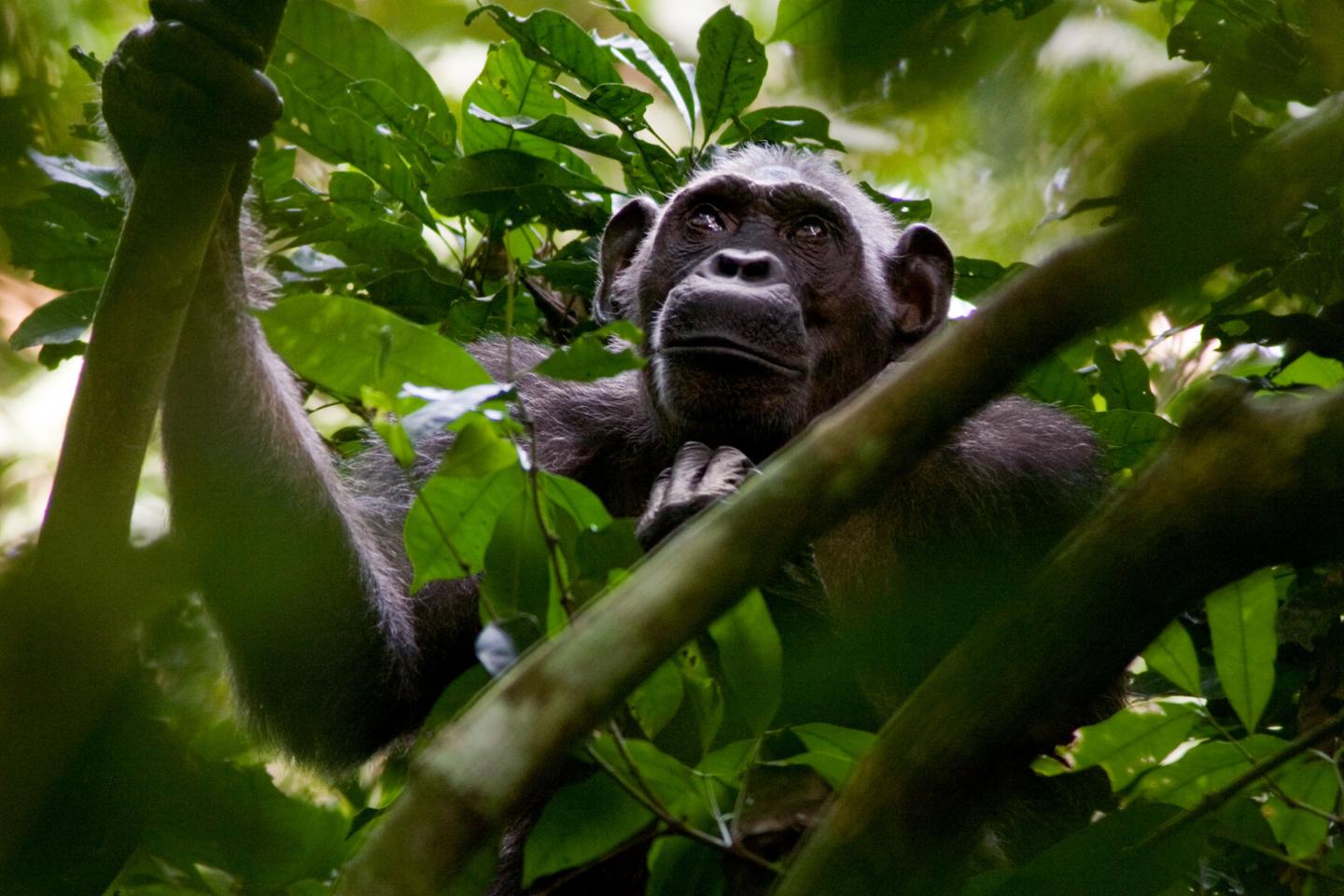
This is a central chimpanzee. The number of gorillas and chimpanzees in Central Africa continues to decline due to hunting, habitat loss, and disease, combined with a widespread lack of... The number of gorillas and chimpanzees in Central Africa continues to decline due to hunting, habitat loss, and disease, combined with a widespread lack of law enforcement and corruption in the judicial process, according to the International Union for Conservation of Nature, Wildlife Conservation Society, WWF, and partners in a new conservation plan.
A new report--titled "Regional Action Plan for the Conservation of Western Lowland Gorillas and Central Chimpanzees 2015-2025"--outlines the growing number of threats to these great apes across six range countries, including the finding that nearly 80 percent of great apes in the region occur outside of protected areas.
While national and international laws protect the Critically Endangered western lowland gorilla and the Endangered central chimpanzee, both subspecies continue to be threatened by hunters and traders seeking to supply the illegal commercial market and demand for bushmeat, particularly in urban areas.
Habitat loss driven by the region's growing human population and the expansion of extractive industries and industrial agriculture is another danger to great apes. And between the 1990s and 2005, Ebola outbreaks in northeastern Gabon and western Congo are thought to have killed thousands of gorillas and chimpanzees.
"The rainforests of Western Equatorial Africa contain most of the world's gorillas and about one-third of all chimpanzees, and gorillas in particular are being severely and negatively impacted by human activities across their range," said Dr. Fiona Maisels, WCS Conservation Biologist and a contributor to the plan. "This action plan represents a multi-dimensional conservation strategy to address the myriad of threats to our closest relatives."
Many of the actions proposed in the previous action plan published in 2005 were successfully implemented and have helped to slow the declines in the ape populations. However, the growing human population in the region coupled with the expansion of extractive industries and industrial agriculture are putting increasing pressure on the remaining great apes - so additional conservation measures are urgently required.
Building on the previous action plan, the new strategy is the product of a regional workshop attended by 70 conservationists, scientists, wildlife health experts, donors, and wildlife authorities and protected area managers from Angola, Cameroon, Central African Republic, Equatorial Guinea, Gabon, and the Republic of Congo. Survey data collected between 2003 and 2013 were used to produce great ape population density maps across the entire range of both western lowland gorillas and central chimpanzees to re-assess conservation priorities.
"Central African governments have demonstrated increased willingness to protect the dwindling populations of gorillas and chimpanzees," said David Greer, WWF's Great Apes Programme Manager. "Now bold steps are needed to ensure that existing wildlife laws are upheld and that weak governance, which results in widespread impunity for wildlife traffickers, is eliminated, to give great apes the opportunity to survive and thrive."
In the new plan, 18 landscapes are identified as critical for the continued survival of western lowland gorillas and central chimpanzees. These landscapes cover half the geographic range of these two subspecies, yet they harbor more than three quarters of the great apes remaining in the region.
Actions needed to protect the remaining gorilla and chimpanzee populations, and evaluate conservation success, include:
- More effective management and protection of large areas outside of formally protected areas;
- Increased law enforcement combined with improved legal frameworks and stiffer sanctions for poachers;
- Coordination across all sectors on land use and protection of natural resources with a priority on conserving great ape populations;
- Conservation advocacy for wildlife and law enforcement to effect behavior change;
- An enhanced understanding of diseases such as Ebola to guide conservation actions;
- Monitoring of great ape abundance and distribution, habitat loss, and illegal activities.
"The action plan will serve as a guide for range-state governments and their conservation partners in how best to protect the region's natural heritage," said Dr. Liz Williamson, Vice Chair of the Great Ape Section of the IUCN SSC Primate Specialist Group. "Decisions made today can ensure a brighter future for gorillas and chimpanzees, and the human communities that rely on biodiversity for their well-being."
Source: Wildlife Conservation Society
 Print Article
Print Article Mail to a Friend
Mail to a Friend
